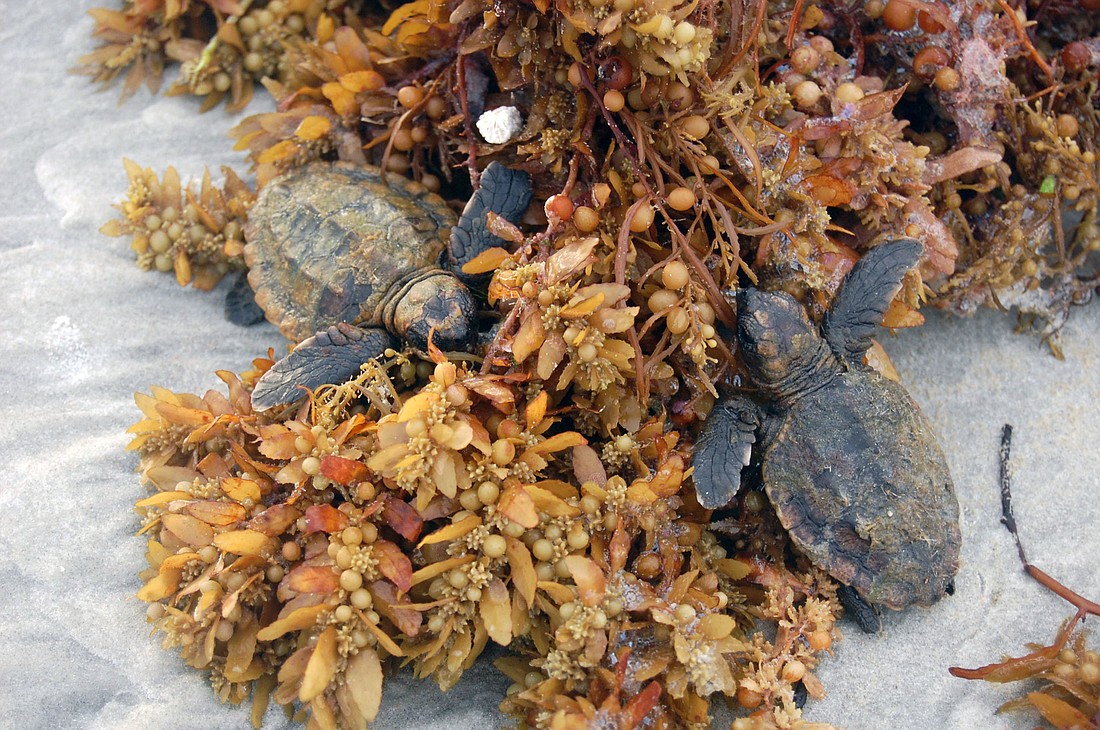- January 19, 2025
-
-
Loading

Loading

by: Pat Kuehn
Volusia County Community Information
Watch where you step on Volusia County’s beaches. Palm-sized sea turtles may be hiding in the Sargassum seaweed that has been washing ashore.
These small turtles, called washbacks, emerged from their nests earlier this summer and swam offshore to the floating line of Sargassum seaweed, only to be pushed back to shore by wind and strong currents.
Tragically, they don’t have the energy to swim back to open waters and may die of dehydration if they are left on the beach.
They need help, but don’t even think about putting them back in the water.
“If you find a washback or hatchling on the beach that is in imminent danger, do not put it back in the ocean,” said Volusia County’s protected species manager, Jennifer Winters. “Instead, contact Beach Safety for further instruction. These animals are often exhausted and can barely lift their heads to breathe. Holding them in water or putting them in the ocean can be fatal because they don’t have the energy needed to make it back out on their own.”
She encourages people to follow these tips:
Make sure the turtle is out of harm’s way. Do not take it home.
Washbacks are brought to the Marine Science Center, where they are treated and returned to the ocean by boat when they are strong enough to swim. While the center hasn’t received any washbacks yet this season, it’s only a matter of time. Washbacks could be found anytime fresh seaweed washes in now through November.
Volusia County’s Environmental Management Division has trained a team of volunteer Washback Watchers, who comb the beach each day as fresh seaweed washes in during washback season, which is from August through November. If you would like to become a Washback Watcher in 2023, call 386-238-4716 or visit volusiaseaturtles.org to be placed on the list for next year’s training class.